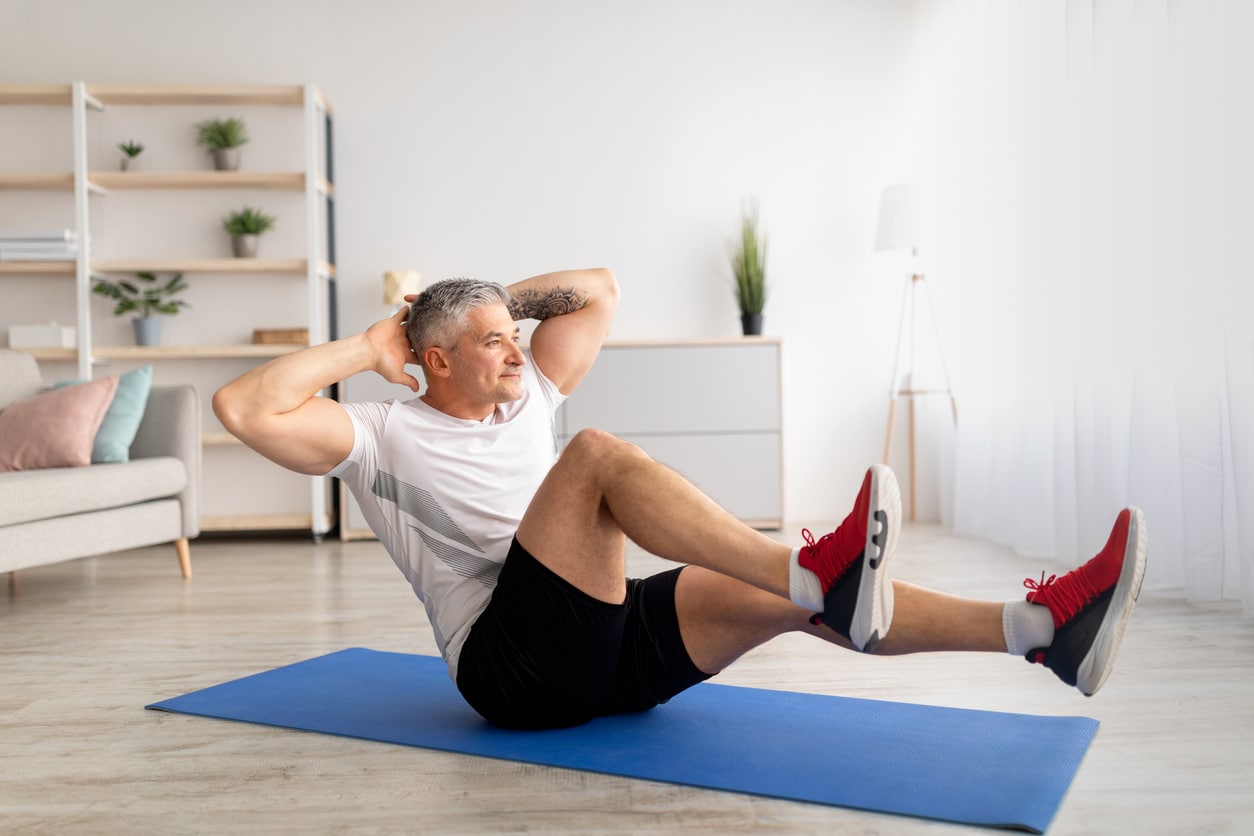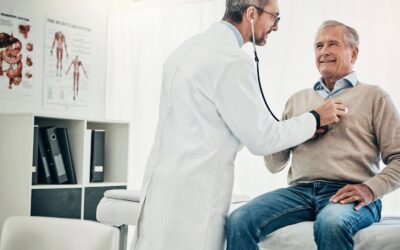Debilitating symptoms of low testosterone dramatically impact your quality of life, affecting everything from your physical capabilities to your mental well-being. Modern advances in medicine now make it possible to receive professional-grade hormone therapy without the frequent clinic visits, allowing men to reclaim their vitality from the comfort of their own home.
Understanding Testosterone Replacement Therapy (TRT)
Testosterone replacement therapy (TRT) is a specialized medical treatment designed to address testosterone deficiency and restore optimal hormone levels in men experiencing low T (Mayo Clinic). This therapeutic approach aims to replenish testosterone levels, so that patients regain their youthful vitality and improve bodily functions affected by hormonal imbalance.
You can administer TRT through various methods, such as injections, topical gels, patches, and creams, each offering different advantages depending on lifestyle and personal preferences. The delivery method has an impact on absorption rates and treatment effectiveness, with injections providing more consistent testosterone levels.
Huddle’s expert, best-in-class TRT clinicians provide personalized guidance throughout your treatment journey. Each practitioner carefully evaluates your symptoms, blood test results, and health history. These medical professionals then develop customized treatment plans that address your specific needs and preferences, ensuring you receive the most appropriate form of hormone replacement therapy for optimal results.
Symptoms of Low Testosterone
Recognizing the signs of low testosterone helps you seek timely treatment and restore your hormonal balance. Men with testosterone deficiency often experience a range of symptoms that can significantly impact their quality of life and overall well-being (Cleveland Clinic). These symptoms can include:
- Persistent fatigue and lack of energy, even after adequate rest
- Depressed mood, irritability, and general lack of motivation
- Dramatically reduced sex drive and diminished interest in sexual activity
- Erectile dysfunction and difficulty maintaining erections
- Decreased muscle mass despite regular exercise
- Increased body fat, particularly around the midsection
- Brain fog and difficulty concentrating on tasks
- Reduced bone density leading to increased fracture risk
- Sleep disturbances, including insomnia
- Loss of body hair and slowed beard growth
If you’re experiencing one or more of these symptoms, a simple blood test can determine your testosterone levels and identify if TRT might benefit you. Working with experienced medical professionals, like those at Huddle who specialize in testosterone therapy, can help you address these symptoms and regain your vitality.
Getting Tested for Low Testosterone
A simple at-home finger-prick blood test is able to accurately measure your total and free testosterone levels. These at-home testing kits provide a convenient first step in identifying potential hormone deficiencies. Many clinics now offer DIY test kits that allow prospective patients to collect small blood samples without leaving their homes, making the diagnostic process more accessible.
Alternatively, scheduling an appointment with your doctor for a comprehensive blood test remains the gold standard for assessing testosterone levels and other related hormones. Medical professionals recommend testing early in the morning when T levels are naturally at their peak. They might also check other factors like estrogen and adrenal gland function to gain a complete picture of your hormonal health.
A healthy range of testosterone for men typically falls between 300 and 1,000 nanograms per deciliter (ng/dL), though optimal levels vary based on age and individual factors (National Library of Medicine). Test results below this range may indicate testosterone deficiency requiring treatment. At the same time, borderline low levels might prompt your doctor to consider both your symptoms and blood work before recommending testosterone replacement therapy or other interventions.

Starting TRT Treatment
Your doctor may initially recommend lifestyle changes like improved diet and exercise before suggesting testosterone replacement therapy (TRT). Healthy habits are a natural treatment for confirmed low T levels, and they support long-term testosterone treatment.
Once you and your medical professional decide to start treatment, you’ll typically begin with low doses of testosterone. Your medical provider adjusts your dosage based on your body’s response and follow-up blood tests.
Choosing the Right TRT Treatment
The optimal testosterone replacement therapy requires careful consideration of your lifestyle, preferences, and specific health needs. Huddle’s expert TRT doctors evaluate your total testosterone level, symptoms, and medical history to design a tailored treatment plan that delivers the best results.
- Injectable testosterone: Administered via at-home self-injections or through a medical provider. Provides consistent hormone levels with weekly or bi-weekly administration, offering the most potent form of testosterone replacement.
- Topical gels and creams: Applied daily to the skin for steady absorption, providing convenience without needles but requiring careful handling to prevent hormone transfer to others.
- Testosterone patches: Offers a non-invasive daily option that releases controlled amounts of hormone directly through the skin. Patches run the risk of detaching from the skin, especially in wet or sweaty conditions.
- Oral Medications: These include testosterone supplements and medications like Clomid that stimulate your body’s natural testosterone production rather than replace it directly.
- Pellet Implants: Provides sustained testosterone release over 3-6 months with a single procedure, eliminating the need for frequent applications. However, pellets do remain under the skin during the treatment period, which could be uncomfortable or unsightly.
Your personalized treatment approach should include complementary strategies like diet modifications, exercise recommendations, and stress management techniques. Regular follow-up blood tests will monitor your progress and allow your TRT clinician to make any necessary adjustments.
At-Home TRT Treatment Options
The convenience of at-home testosterone replacement therapy has revolutionized treatment accessibility for men suffering from low testosterone. Several reputable providers, including Huddle Men’s Health, now offer comprehensive services that include initial blood tests, consultations with medical professionals, and ongoing treatment monitoring without requiring frequent in-person visits.
- Roman offers a DIY blood test kit and two testosterone therapies: a natural supplement and Clomid for stimulating natural production.
- Maximus provides testosterone stimulation using custom compounds of pure enclomiphene, which helps boost your body’s own testosterone production.
- Hone Health offers traditional testosterone replacement therapy, Clomid, and anastrozole to help manage estrogen levels alongside testosterone treatment.
- Huddle Men’s Health delivers complete testosterone replacement therapy with personalized treatment plans and comprehensive follow-up care.
Huddle Men’s Health stands out from other providers by offering a truly personalized approach to testosterone therapy, with treatment plans specifically tailored to address your unique symptoms and hormone levels. Huddle’s experienced TRT clinicians provide ongoing support throughout your journey, regularly assessing your progress through follow-up blood tests and making necessary adjustments to optimize your results.

Benefits of TRT Treatment
Testosterone replacement therapy offers numerous life-changing benefits for men suffering from low testosterone levels and related symptoms. When properly administered and monitored by medical professionals, TRT can significantly improve quality of life through several key mechanisms (Cleveland Clinic). These benefits include:
- Increased energy levels: Reduced fatigue and restoration of normal vigor and vitality.
- Enhanced sex drive: Improved libido and renewed interest in sexual activity.
- Better erectile function: Stronger, more reliable erections and sexual performance.
- Mood improvement: Decreased depression, irritability, and anxiety.
- Increased muscle mass: Greater strength and improved body composition.
- Reduced body fat: Particularly around the abdominal area. TRT helps men recapture a healthy body weight.
- Higher bone density: Decreased risk of osteoporosis and fractures.
- Improved cognitive function: Better concentration and reduced brain fog.
- Enhanced well-being: Overall improvement in quality of life and sense of wellness.
- Better insulin sensitivity: Improved metabolic health and potential reduction in type 2 diabetes risk.
Working with experienced TRT clinicians ensures you receive the optimal treatment plan to maximize these benefits while carefully monitoring your hormone levels for safety and effectiveness.
Starting TRT: What to Expect
When beginning testosterone replacement therapy, you can expect to receive a comprehensive diagnosis. This evaluation covers your initial blood test results, symptoms, and medical history. Huddle’s team of TRT specialists develops a bespoke treatment plan that addresses your specific hormone deficiency, taking into account factors like age, overall health, and lifestyle needs.
Our experienced medical professionals have extensive expertise in testosterone therapy and hormonal health. You’ll have the opportunity to discuss all aspects of your personalized plan, including medication options, potential benefits, and any concerns you might have about starting TRT.
Follow-up and Monitoring
Regular follow-up appointments with your doctor are essential components of a successful TRT regimen, allowing for close monitoring of your hormone levels and any potential side effects. These check-ins include follow-up blood tests to measure your testosterone levels, as well as other important markers like estrogen, which can become elevated during treatment.
Your treatment plan may require adjustments based on your body’s response to testosterone replacement therapy and any symptoms you experience along the way. Consistent monitoring ensures your T levels stay within the optimal range, while minimizing risks such as blood clots, acne, or mood changes that can occasionally occur with hormone replacement.
Invest in At-Home TRT Treatment with Huddle Men’s Health
Men struggling with hypogonadism are regaining their masculine vigor and zest for living through properly supervised testosterone optimization programs. These TRT programs balance hormonal levels and rejuvenate physiological functions.
Comprehensive lifestyle modifications that address nutrition, strength training, sleep quality, and stress management alongside medical interventions yield the most sustainable results for longevity and peak performance. Contact Huddle Men’s Health today to schedule your confidential consultation and begin your transformation toward optimal hormonal health.
FAQs
Starting a new hormone regimen introduces a host of questions that we’re sure you’re seeking answers to. Here are some of the most common at-home TRT questions and their answers.
Can I safely do TRT treatment at home?
Yes, at-home TRT treatment is safe when prescribed by a doctor. Options include self-injections, gels, or patches, with regular blood tests to monitor testosterone levels and effectiveness.
What are the benefits of at-home TRT treatment?
At-home TRT offers convenience, privacy, and flexibility while helping to boost energy, improve muscle mass, enhance sex drive, and support overall well-being.
What are the risks of at-home TRT therapy?
TRT may have risks like increased red blood cell count, acne, mood changes, and potential prostate concerns. Regular follow-up blood tests help ensure safe and effective treatment.
What is the best method for administering TRT at home?
TRT is available as injections, topical gels, and patches. Injections provide steady testosterone levels, while gels and patches offer a non-invasive alternative. Your doctor can recommend the best option.




